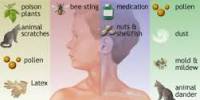Meditation can help reduce stress and change the inner chemistry of the body to a healthier, more relaxed state. So all those excuses regarding how busy you are and how little time you have can now be thrown out the window.
Normally, I always suggest to meditate early in the morning, when the mind is fresh, or before going to sleep, after the day’s hustle and bustle is done, but in this case I suggest doing the 3 minute meditation right in the middle of the day or if you are facing a stressful situation. This is so the meditation can help immediately neutralize the harmful stress hormones and put you back in a relaxed, peaceful state of mind.
Let me quickly explain Quick Meditation Exercise:
Meditation Exercise:
This meditation technique can be done easily, and requires very little time. The benefits of this technique are quite powerful. If practiced regularly, it will build your visualization and concentration skills over time.
In order to help you visualize, draw your chosen shape on a blank piece of paper. Then use it as a reference point to start your visualization meditation. Stare at the image for about 30 seconds, then close your eyes and try to see it in your mind’s eye. Try to keep your eyes closed for 1 minute with the image in your head. If you can’t see the image steadily yet, then open your eyes and stare for another 30 seconds. Continue doing this until you can hold the image of the shape in your mind steadily.
Simple Stress relief visualization:
We all experience stress at one point or another. So, it’s important to know how to cope with it when we have a stressful experience. Learning a simple meditation technique which you can use at any time, will allow you to quickly eliminate stress.
This quick stress relief method involves a simple visualization. If you have difficulty visualizing, then feel free to review my article describing different visualization building exercises.
Mindfulness meditation:
There are many different ways to engage in the practice of mindfulness meditation. I’ve found that the easiest meditation techniques for mindfulness are: counting breath, mantra meditation and cycling senses.
The simplest method for mindfulness meditation is to focus on your breathing. Feeling the tactile sensations caused by the flow of air brings the mind to the present moment in one-pointed concentration. Combined with belly breathing, this technique for mindfulness creates a very powerful relaxation response. It’s an excellent technique for ridding the mind of distracting thoughts, and relieving stress.
Here is a quick meditation for you to practice if stress has made an unwelcoming visit and has settled into your body. Read the meditation a few times to become familiar with the exercise so it will come very naturally to you when you are ready to begin.
Find a comfortable place where you can relax with ease. This can be your bed, couch, favorite chair, or even outdoors. Let it be a place where you will not become easily distracted or interrupted. Close your eyes, take a couple of deep breaths into your body, and settle into the comfortable space that surrounds you. Allow your exhalations to be longer than your inhalations, as this has a calming, soothing effect for the entire body. Feel your chest and ribcage expand and relax while the belly rises and falls as you breathe in and out through the nose. Let the breath be soft, not forceful. As you inhale, feel the cool breath travel to the roof of your mouth, all the way up to your brain, and let the cool breath refresh your mind. As you exhale, allow the tension to leave your body. Channel your next inhalation throughout your entire body, soothing your nerves, and as you exhale, soften your spirit, and lighten your load. With each exhaled breath, release your cares, empty your mind, invite calm into your entire being, and come home to yourself once again.
















